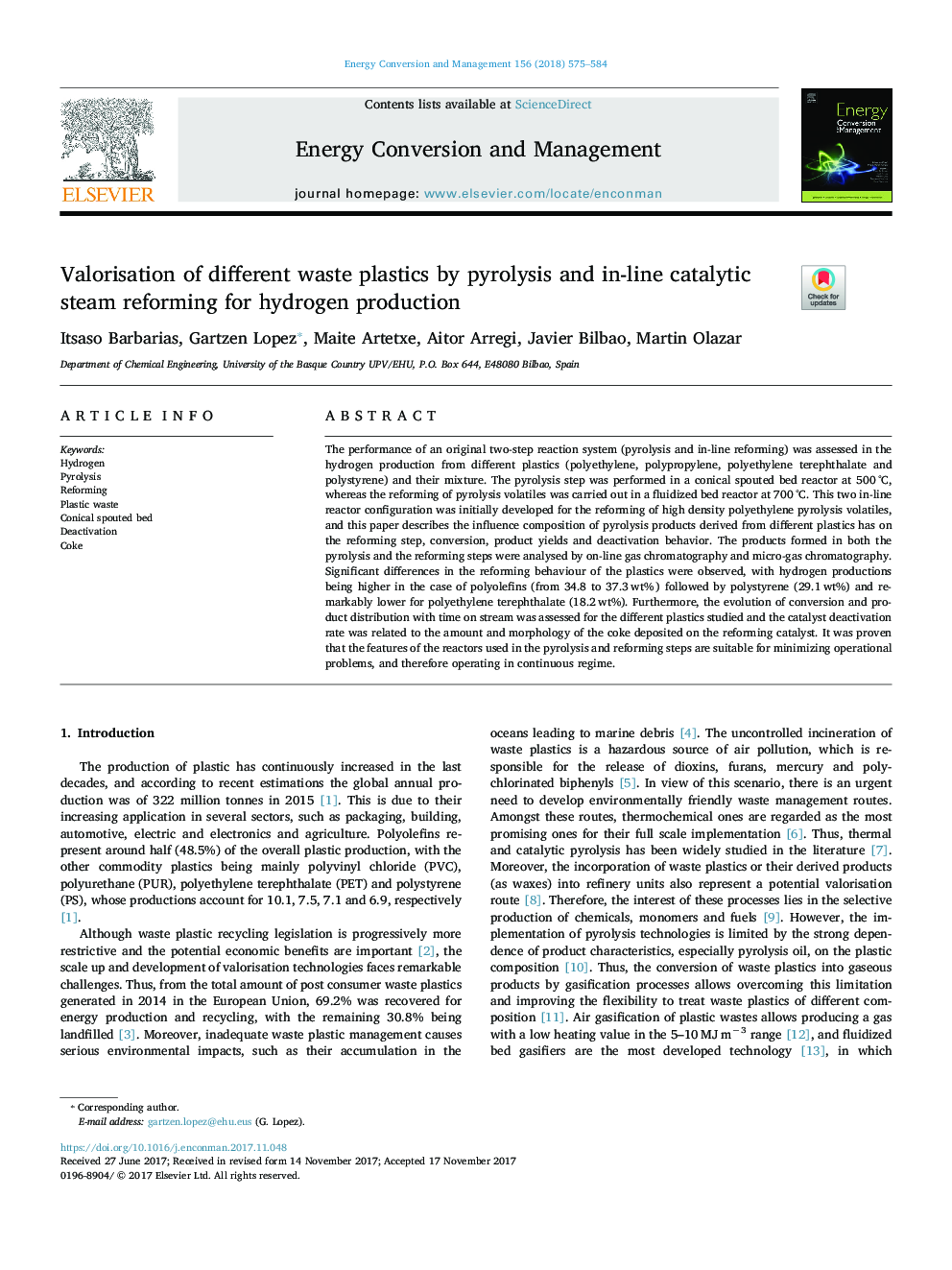| Article ID | Journal | Published Year | Pages | File Type |
|---|---|---|---|---|
| 7159481 | Energy Conversion and Management | 2018 | 10 Pages |
Abstract
The performance of an original two-step reaction system (pyrolysis and in-line reforming) was assessed in the hydrogen production from different plastics (polyethylene, polypropylene, polyethylene terephthalate and polystyrene) and their mixture. The pyrolysis step was performed in a conical spouted bed reactor at 500â¯Â°C, whereas the reforming of pyrolysis volatiles was carried out in a fluidized bed reactor at 700â¯Â°C. This two in-line reactor configuration was initially developed for the reforming of high density polyethylene pyrolysis volatiles, and this paper describes the influence composition of pyrolysis products derived from different plastics has on the reforming step, conversion, product yields and deactivation behavior. The products formed in both the pyrolysis and the reforming steps were analysed by on-line gas chromatography and micro-gas chromatography. Significant differences in the reforming behaviour of the plastics were observed, with hydrogen productions being higher in the case of polyolefins (from 34.8 to 37.3â¯wt%â¯) followed by polystyrene (29.1â¯wt%) and remarkably lower for polyethylene terephthalate (18.2â¯wt%). Furthermore, the evolution of conversion and product distribution with time on stream was assessed for the different plastics studied and the catalyst deactivation rate was related to the amount and morphology of the coke deposited on the reforming catalyst. It was proven that the features of the reactors used in the pyrolysis and reforming steps are suitable for minimizing operational problems, and therefore operating in continuous regime.
Related Topics
Physical Sciences and Engineering
Energy
Energy (General)
Authors
Itsaso Barbarias, Gartzen Lopez, Maite Artetxe, Aitor Arregi, Javier Bilbao, Martin Olazar,
